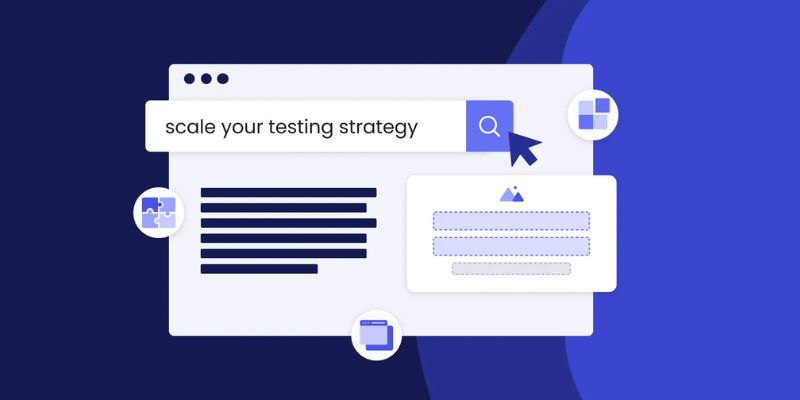
In today’s fast-paced software development environment, delivering high-quality products within tight deadlines is essential. A strong software testing strategy is crucial for ensuring that applications meet both functional and performance standards. Whether you’re building a mobile app or a complex enterprise solution, a well-defined testing strategy helps detect issues early, reduce costs, and improve customer satisfaction.
This blog explores key steps to build a robust software testing strategy that aligns with your development goals and delivers high-quality software.
Introduction to Software Testing Strategy
A software testing strategy is a detailed plan that outlines the testing objectives, tools, techniques, and timelines required to ensure a product’s quality. It is essential to identify risks early in the software development lifecycle (SDLC) and define how testing will mitigate these risks. A well-thought-out strategy ensures that all functional and non-functional requirements are thoroughly tested, preventing costly defects post-release.
A robust software testing strategy takes into account the types of testing required, such as manual vs. automated testing, the resources needed, and the tools and methodologies to be used. To enhance your software testing expertise, Software Testing Training in Chennai offers specialized courses and expert instruction tailored to your career aspirations.
Key Components of a Software Testing Strategy
Building a software testing strategy involves several key components that must be carefully planneds and executed to achieve successful results. Below are the primary elements to focus on:
Define Testing Objectives
Clear objectives should be the foundation of any testing strategy. These objectives must align with the overall goals of the development project. Some common testing objectives include:
- Ensuring software meets functional requirements
- Identifying bugs and defects early
- Verifying system stability and performance under load
- Ensuring the user experience is optimal
By defining your objectives, you set a clear direction for the entire testing process.
Choose the Right Testing Types
Software testing can be categorized into several types, including:
- Functional Testing: Verifying the software’s functionality against the requirements.
- Non-Functional Testing: Evaluating performance, security, and usability.
- Regression Testing: Ensuring that new changes don’t break existing functionality.
- User Acceptance Testing (UAT): Confirming the software meets end-user expectations.
Choosing the right combination of testing types based on your project’s needs is essential for building a well-rounded strategy.
Prioritize Test Cases
Not all features of a product need to be tested equally. Prioritizing test cases based on the risk associated with a feature helps allocate resources more efficiently. Focus on high-impact areas, such as critical user flows, core functionalities, and performance bottlenecks. This approach ensures that potential defects in key areas are identified early.
Enrolling in Software Testing Online Trainingequips you with advanced testing techniques, preparing you for complex challenges in software quality assurance.
Decide Between Manual and Automated Testing
One of the crucial decisions in a testing strategy is selecting between manual and automated testing. While manual testing is ideal for exploratory and usability testing, automated testing excels in repetitive tasks such as regression and performance testing.
An effective testing strategy will typically involve a combination of both. Automation reduces the time spents on repetitive tasks, enabling faster feedback loops, while manual testing allows for more nuanced evaluations of the user experience.
Select the Right Tools
Using the right tools is critical for the success of your testing strategy. Several tools are available for both manual and automated testing, such as:
- Selenium: For automating web applications.
- JIRA: For tracking bugs and managing test cases.
- JMeter: For performance testing.
Selecting tools that integrate wells with your existing development pipeline will make the process more streamlined and efficient.
To boost your development skills, Selenium Training in Chennai offers specialized courses and expert guidance tailored to your career goals.
Incorporate Continuous Testing in CI/CD
In today’s DevOps-driven environment, continuous integration and continuous delivery (CI/CD) pipelines have become the norm. To ensure faster, error-free releases, incorporate continuous testing into your CI/CD pipeline. This allows for automateds tests to be executed every time new code is integrated, ensuring rapid feedback and minimizing risks associated with frequent deployments.
The Importance of Collaboration and Communication
Collaboration between developers, testers, and other stakeholders is crucial for building an effective software testing strategy. Testing should not be isolated from development but rather integrated into the entire SDLC. Ensuring open lines of communication helps align testing goals with overall project objectives and reduces the likelihood of missed requirements.
Enrolling in Selenium Online Training equips you with the skills needed to tackle complex application development challenges using the platform.
Testing teams should also communicate with product managers and end-users to understand real-world use cases. This will enable them to design test cases that focus on customer needs, ultimately improving user satisfaction.
A robust software testing strategy is essential for delivering high-quality products that meet user expectations and business goals. By defining clear testing objectives, prioritizing test cases, using the right tools, and incorporating automated testing into your CI/CD pipeline, you can significantly enhance your software’s quality and performance. Enrolling in an Advanced Training Institute in Chennai can help you gain advanced knowledge and practical skills, preparing you for complex challenges in your field.
Collaboration among team members and continuous testing will ensure that your strategy evolves with the product, helping you catch bugs early, reduce costs, and release software that stands out in a competitive market.